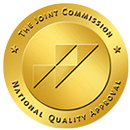A form of hypnotherapy, Guided Imagery uses visualization to improve an individual’s emotional state of being while bringing about the desired outcome in thought, behavior and coping mechanisms. Effective in reducing pain and anxiety, this alternative method integrates meditation with visualization which also helps you sleep better at night. Under the direction of a therapist, persons struggling with addiction are able to tap into their subconscious in order to make emotional connections, thereby improving self-esteem and self-efficacy.
Stress Levels in Individuals with Addiction
Stress produced by factors during childhood and adolescent years later negatively affect an individual’s ability to cope with regular life stressors in adulthood, such as interpersonal conflict, loss of a loved one through death or divorce, work-related stress and financial problems. Other stressors may be physiological or pharmacological, such as insomnia, hunger, and misuse of psychoactive drugs. “Stress,” as defined by researchers, is the perception and appraisal of harmful, threatening stimuli. It’s not the stress factor itself that renders one vulnerable to addiction; it’s the way one perceives the stressor – whether or not one thinks they can handle it – that determines their response to the stimulus. When a traumatized individual feels that there are no adaptive resources such as family support or friends to cope with stress, he/she is likely to turn to alcohol and drug abuse as coping mechanisms to escape the pain. The addiction counselor’s use of guided imagery targets his/her patient’s perception of oneself, the obstacle, and the victory on the other side of the hurdle.
How Guided Imagery Improves Coping Skills in Addiction Treatment
Can you reduce your stress levels by simply picturing your “happy place” in your mind? According to the January issue of Mayo Clinic Health letter, research shows that guided imagery makes a positive impact on the body’s endocrine, immune and autonomic nervous systems. Under the guidance and direction of an addiction therapist, an individual learns to listen to someone else’s voice and consciously generate power images in his mind to lower his/her stress levels. Techniques such as simple visualization, storytelling, game playing and fantasy exploration are creative ways to activate the imagination and connect with images that are submerged in the subconscious. Scientific evidence has revealed the following benefits of guided imagery:
Under the guidance and direction of an addiction therapist, an individual learns to listen to someone else’s voice and consciously generate power images in his mind to lower his stress levels. Techniques such as simple visualization, storytelling, game playing and fantasy exploration are creative ways to activate the imagination and connect with images that are submerged in the subconscious.
Scientific evidence has revealed the following benefits of guided imagery:
- Diminished side effects of chemotherapy
- Decrease the need for pain medication
- Reduced fear and anxiety, especially before surgery
- Better stress management skills
- Headache & migraine relief
- Improve treatment of skin problems
- Eliminate or reduce insomnia
Since stress has a way of blocking one’s memory (i.e., making you forget your lines right before a presentation at work), the mental discipline of guided imagery is especially helpful for executives who need to possess this coping skill to lower their stress levels in highly demanding careers.



